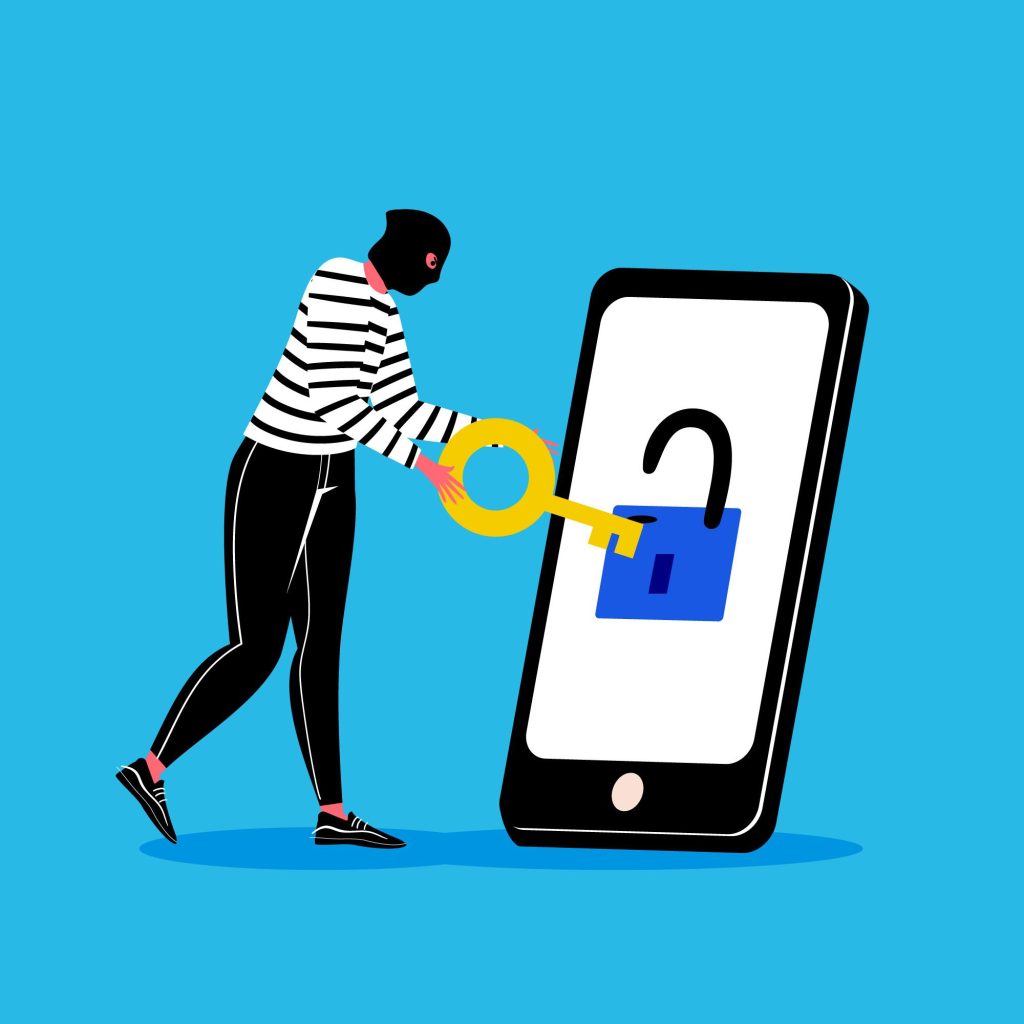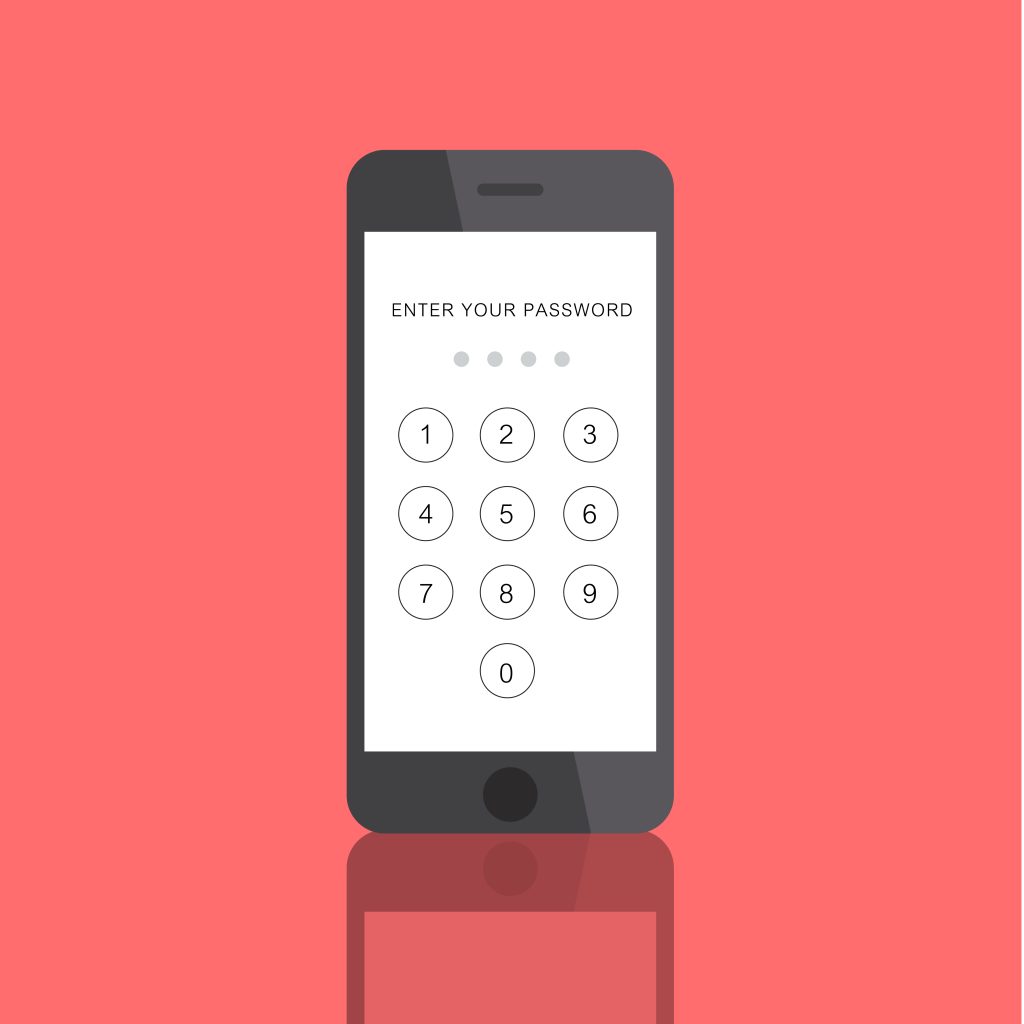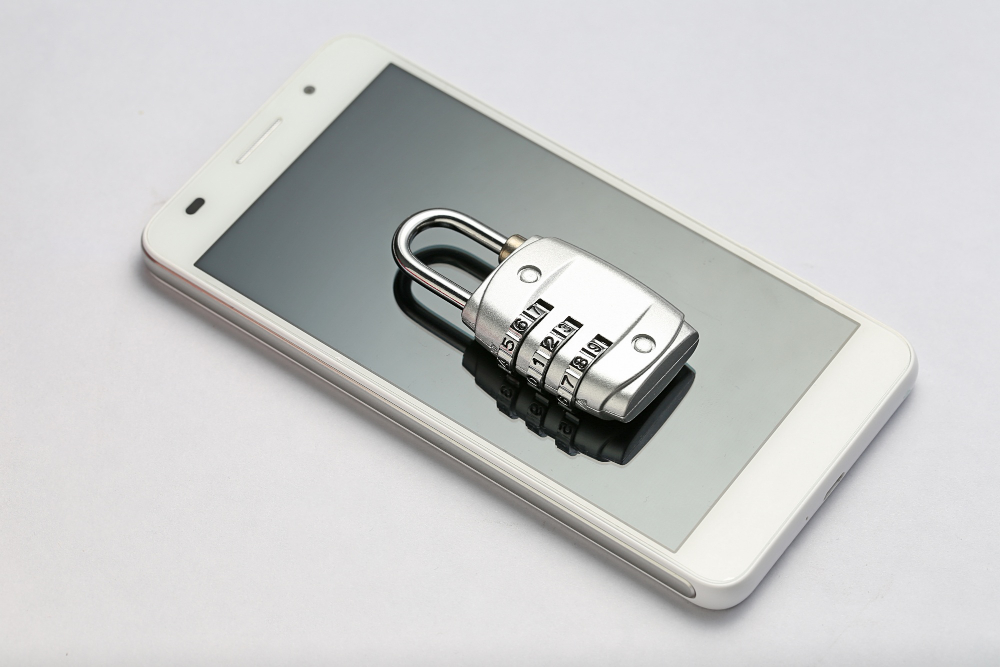The iPhone has emerged not just as a communication device, but as a repository of our most cherished memories, work documents, and essential applications that ease daily life. Given the depth of personal information stored, Apple has equipped these devices with robust security measures. But what happens when the very passcodes meant to protect us become barriers due to forgetfulness? The anxiety of being locked out of one’s iPhone is real, but resorting to a complete restoration isn’t the only path. Several alternative solutions can help users regain access without wiping their precious data.
100% Working Methods to Unlock iPhone If You Forgot Passcode Without Restore?

1. Using iCloud to Unlock Your iPhone with ‘Find My iPhone’
Apple’s iCloud platform, seamlessly integrated into every iOS device, provides a robust suite of features aimed at ensuring both user convenience and security. One such invaluable tool within this suite is ‘Find My iPhone’, designed to locate, lock, or erase your device if misplaced. For those moments of forgetfulness where you’re locked out of your iPhone, the ‘Find My iPhone’ feature can be a savior. However, it’s imperative that this feature was activated before the lockout.
Step-by-Step Guide to Unlocking Your iPhone using iCloud:
Access iCloud: Begin by visiting iCloud.com from a computer or another device’s web browser. Ensure you’re on the official Apple website to maintain your data’s security.
Log In: At the iCloud login page, input your Apple ID credentials – the same ones linked to the locked iPhone. This action will provide access to various iCloud features tailored to your account.
Navigate to ‘Find My iPhone’: Once inside the iCloud dashboard, look for the “All Devices” dropdown at the top. This section lists all the devices linked to your Apple ID.
Select Your Device: From the dropdown, click on the name of the locked iPhone. This action will shift the interface to a device-centric view, providing multiple options like ‘Play Sound’, ‘Lost Mode’, and ‘Erase iPhone’.
Erase iPhone: By choosing “Erase iPhone”, iCloud will remotely wipe your device, erasing both the data and the forgotten passcode. While this option does grant access to the iPhone, it’s essential to note that all data will be lost unless you have a backup to restore from later.
2. Siri Bug Exploitation: An Unconventional Unlocking Method
Over time, Apple’s iOS, like any robust software, has seen its fair share of quirks and vulnerabilities. One such curious hiccup has been the Siri bug, a loophole in some iOS versions allowing users to bypass the passcode screen. This method isn’t foolproof, as its success hinges on specific iOS iterations and configurations. Yet, for those willing to try an untraditional approach, this Siri exploit might offer temporary respite.
A Step-by-Step Guide to the Siri Bug Unlock Method:
Summoning Siri: Initiate Siri by either long-pressing the home button or, if you’ve set it up, vocally commanding “Hey Siri”. It’s Siri’s prompt response that serves as the first step to this workaround.
Prompting with an Absent App: Trick Siri by requesting her to open an application that isn’t installed on your device. For instance, if you don’t have “Spotify”, ask Siri to open it.
Using App Store: Upon realizing the app’s absence, Siri will candidly express her inability to locate the application, subsequently suggesting the App Store as an avenue to acquire it. An App Store icon or prompt should appear. Tap on it. If the vulnerability exists on your device, this action might bypass the locked screen, granting a brief window of access.
Note: This method is unreliable and might not work on newer iOS versions. It’s also not a full unlock but might allow temporary access.
3. Third-party Software for iPhone Unlocking
Third-party software developers have ventured into creating tools aimed at resolving the age-old dilemma of forgotten iPhone passcodes. These tools and software promise to grant users access to their devices without resorting to a complete restoration. But, like any tool that isn’t from the original device manufacturer, they come with their own set of challenges and warnings.
Third-party iPhone Unlock Tools
Research Extensively: Before even considering downloading or purchasing a tool, it’s paramount to conduct thorough research. Online reviews, tech forums, and expert recommendations can offer invaluable insights into a tool’s efficacy and trustworthiness.
Understand the Risks: Not all software is built equally. Some might come laden with malware or might compromise the security of your device. It’s crucial to be cognizant of these risks. Always backup your data before using any third-party software.
Trust Reputable Sources: If you’ve identified a tool that seems promising, ensure you download or purchase it from the official website or a reputable platform. Avoid dubious sources or links from unverified emails.
Seek Expert Advice: If uncertain, it might be worthwhile to consult with a tech-savvy friend or professional. They might have experience or knowledge about the software in question and can guide you on its safety and reliability.
4. Two-factor authentication for iPhone Unlocking
Apple introduced the two-factor authentication (2FA) mechanism for its devices—a feature that, while primarily designed to add an extra layer of security, can also come to the rescue when dealing with forgotten passcodes. If previously set up, two-factor authentication can be the key to regaining access to your iPhone without resorting to data loss or extensive processes.
Step-by-Step Guide to Unlocking with Two-Factor Authentication
Initiate Recovery: Begin by navigating to Apple’s password recovery page, which can be accessed at iforgot.apple.com. This page serves as the gateway to various account recovery options.
Enter Apple ID: On this page, you’ll be prompted to input your Apple ID—the email address associated with your locked device. Ensure you input it correctly to proceed to the next stage.
Follow 2FA Prompts: The system will recognize that two-factor authentication has been enabled for your account. As such, it will provide specific on-screen instructions tailored to your 2FA setup. This might involve receiving a verification code on a trusted device or through a text message, confirming a phone number, or answering security questions. Adhere to these prompts diligently to reset the password and regain access to your device.
5. Seeking Assistance Directly from Apple Support
Sometimes, when all methods fall short, seeking direct assistance from Apple – the very architects of the iPhone – might be the wisest route. Especially for users who are wary of third-party tools or technical workarounds, Apple’s own technicians can offer peace of mind and expert intervention. While they prioritize security and can’t simply override a passcode, they can assist genuinely stuck users in particular scenarios.
Apple Support Unlocking Process
Schedule or Walk-in: If you prefer a planned approach, consider booking an appointment with the nearest Apple Store through their website or the Apple Support app. Alternatively, if you’re feeling spontaneous or desperate, just walk into an Apple Store or an authorized Apple service provider.
Show Proof of Ownership: Once you’re at the store, be prepared to provide clear evidence that the iPhone in question belongs to you. This typically means presenting a purchase receipt or invoice. Apple places a premium on user security, and ensuring rightful ownership is pivotal before they assist.
Detail Your Predicament: Engage with the Apple technician, explaining your situation clearly. Whether it was an accidentally changed passcode by a toddler, a forgotten combination after a long hiatus, or any other genuine scenario, a transparent recount can aid in procuring the best assistance.
Follow Expert Guidance: The Apple technician, equipped with both technical knowledge and company protocol, will guide you through the next steps. This might involve specific reset procedures, account verification, or other tailored solutions based on your situation.
While it might seem like a drawn-out approach, resorting to official channels, like Apple Support, can often be the safest and most reliable method for addressing passcode conundrums. It also emphasizes the critical balance between stringent device security and compassionate user support.
6. VoiceOver & Siri
Apple’s Siri, alongside being an accommodating digital assistant, has occasionally been at the center of some interesting software quirks. One of these unexpected features involves the collaboration of Siri with VoiceOver, a screen-reading functionality, to potentially bypass the iPhone’s lock screen. It’s important to underline the word ‘potentially’—as this method’s success is heavily contingent upon the iOS version and isn’t a guaranteed solution.
A Guide to the VoiceOver & Siri Exploit
Summon Siri: Initiate the voice assistant by either holding down the side or home button or if activated, by simply saying “Hey Siri.”
Enable VoiceOver: Once Siri is listening, instruct her by saying, “Enable VoiceOver.” Siri should promptly activate this feature, which aids visually impaired users by reading out screen content.
Navigation on Lock Screen: With VoiceOver activated, go to the lock screen of your iPhone. Start by swiping left, and navigating through the items present on the screen. The goal is to highlight or select the unlock slider.
Unlock Attempt: Once the unlock slider is selected, it won’t behave as usual due to VoiceOver. Instead, you’ll need to double-tap the slider. If this exploit works on your version of iOS, this action could potentially grant you access to the device.
7. The Auto Erase Feature
Apple’s commitment to user data security is evident in its myriad of features and settings aimed at protecting information. One such feature is the ‘Auto Erase’ function. While it might sound drastic, its primary intent is to safeguard your data from unauthorized access, especially if your iPhone falls into the wrong hands.
When enabled, after ten unsuccessful passcode attempts, the device will automatically erase all its data. However, while it serves as a robust protective measure, it also means you’ll lose everything if you don’t have a backup.
Setting Up the Auto Erase Feature on Your iPhone
Access Settings: From your iPhone’s home screen, tap on the ‘Settings’ app, which is symbolized by the gear icon.
Navigate to Passcode Settings: Within Settings, search for and select the ‘Touch ID & Passcode’ option. This might just be ‘Passcode’ or ‘Face ID & Passcode’, depending on your iPhone model.
Activate Erase Data: Once you’re within the passcode settings, you’ll need to scroll down until you find the ‘Erase Data’ option. Toggle this switch on. A warning prompt will appear, informing you about the consequences of this action. If you’re sure, proceed to enable it.
8. Tapping into the Recovery Mode: A Rescue Route for iPhone Users
Apple’s design philosophy has always encompassed not only elegance but also resilience. To that end, iPhones come with a built-in recovery mode, a safeguard for those times when your device seems to hit a wall, either due to software glitches or forgotten passcodes.
Recovery mode isn’t just a diagnostic state; it allows users to restore their iPhones, giving them a clean slate. While powerful, this method also erases all data on the phone, so it’s essential to approach it with caution and an understanding of its implications.
How to Use Recovery Mode to Restore Your iPhone?
Preparation Phase: Begin by connecting your iPhone to a computer using a USB cable. Depending on the operating system, open either iTunes (for Windows and macOS versions prior to Catalina) or Finder (for macOS Catalina and later).
Entering Recovery Mode: The method to force restart and enter recovery mode varies depending on your iPhone model:
For iPhone 8 or later: Quickly press and release the Volume Up button, then the Volume Down button, and finally, press and hold the Side button until you see the recovery mode screen.
For iPhone 7 and 7 Plus: Press and hold the Volume Down and Sleep/Wake (or Side) buttons simultaneously until you see the recovery mode screen.
For iPhone 6s and earlier: Press and hold the Home and the Top (or Side) buttons at the same time until you see the recovery mode screen.
Restoring the iPhone: Once your iPhone is in recovery mode and is recognized by iTunes or Finder, you will see a pop-up window with options to “Update” or “Restore.” Since you aim to bypass the passcode, choose the ‘Restore’ option. This action will instruct the software to download the latest iOS version and restore your iPhone to its factory settings, effectively erasing the passcode and all data.
9. Family Shared Account
Family Sharing, an often-overlooked feature provided by Apple, serves as a collaborative platform that binds family members under a unified umbrella, permitting shared App Store purchases, iCloud storage, and more. Crucially, it also embodies an essential tool for those tricky moments when one forgets their iPhone passcode.
The Family Sharing structure allows the family organizer, essentially the main controller of the shared group, to reset the password of any member. This unique ability ensures that if you ever find yourself locked out, there’s an added layer of support available.
Steps to Utilize the Family Shared Account for Passcode Recovery
Initiate the Organizer’s Device: The process begins on the family organizer’s iPhone. The person entrusted with this role should access the ‘Settings’ application, symbolized by the gear icon.
Access the Family Sharing Section: Within ‘Settings’, the organizer must click on their name. This action will lead them to their personal Apple ID page, where the ‘Family Sharing’ option becomes visible.
Venture into Security: Beneath the ‘Family Sharing’ banner, an option labeled “Password & Security” presents itself. This section primarily concerns the safety protocols associated with the Apple ID, including password management.
Commence the Password Reset: Once inside the ‘Password & Security’ area, there’s a clear-cut choice to “Reset Password.” Clicking this will initiate a process that guides the family organizer through steps to help the locked-out member reset their password, thus potentially granting them access to their device without resorting to drastic measures.
10. Using Trusted Computer
In the expansive realm of iPhone’s security features, one often-overlooked lifesaver is the trusted computer—a PC or Mac where you’ve previously synced your iPhone. It becomes a beacon of hope for those instances when you’re locked out of your device.
This trust-based relationship between your iPhone and the computer means that the latter can interact with the phone without needing the passcode, thus enabling recovery options that other devices can’t provide.
How to Use a Trusted Computer for iPhone Recovery?
Connection First: Begin by grabbing a USB cable to physically link your iPhone with your trusted computer. This computer should be one where you’ve previously synced your device, enabling iTunes to recognize the iPhone without a passcode prompt.
Engage iTunes: Once your iPhone is connected, open the iTunes application. If your computer uses macOS Catalina or later, you’ll utilize the Finder instead.
Initiate Sync: Normally, if the computer is indeed trusted, iTunes will automatically start the syncing process, creating a backup of your iPhone data. It’s crucial to be patient during this phase, allowing the software to meticulously back up every byte of your information.
Restoration: After ensuring that the synchronization and backup processes are completed, navigate to the iPhone pane within iTunes. Here, you’ll spot a button labeled “Restore iPhone…” in the summary section. Pressing this will initiate the device restoration, returning your iPhone to factory settings but eliminating the forgotten passcode.
This method is contingent on the pre-existing trust relationship between your iPhone and the computer. For those who’ve been proactive about syncing their device regularly, this can be a less invasive means of regaining access compared to other recovery options.

FAQs
Recovery Mode is a diagnostic mode on the iPhone that allows users to restore their device if it isn’t functioning correctly. By entering this mode and connecting to iTunes or Finder, users can restore their iPhones, thereby bypassing the forgotten passcode.
In certain iOS versions, there were vulnerabilities that could potentially allow users to exploit Siri to gain temporary access to the device. However, this method isn’t always reliable and may not work with newer iOS versions.
While many third-party tools claim to unlock iPhones without restoring them, it’s essential to be cautious. Not all these tools are safe or reliable. It’s crucial to use trusted software and be aware of potential risks.
If your account is under Family Sharing, the family organizer can reset your password from their device, potentially helping you regain access.
The Auto Erase feature automatically erases all data on the iPhone after ten unsuccessful passcode attempts. While it prevents unauthorized access, users must ensure they have backups, as data loss is permanent.
If you’ve previously synced your iPhone with a computer, you can connect the phone to that trusted computer and utilize iTunes to sync and then restore the device, bypassing the passcode.
If you’ve enabled two-factor authentication, you can visit iforgot.apple.com, enter your Apple ID, and follow on-screen prompts related to your authentication setup to reset the password.
Yes, in genuine cases, Apple technicians might help unlock your device. However, you’ll likely need to present proof of purchase and explain the situation at an Apple Store or an authorized service provider.
This method involves exploiting Siri to enable VoiceOver, and then using touch gestures on the lock screen to potentially gain access. It’s worth noting that this might not work on newer iOS versions.
After multiple incorrect attempts, iPhones have a security feature that increases the lockout time with each successive wrong attempt. However, if the Auto Erase feature is enabled, the device will erase all its data after ten unsuccessful tries.
































































